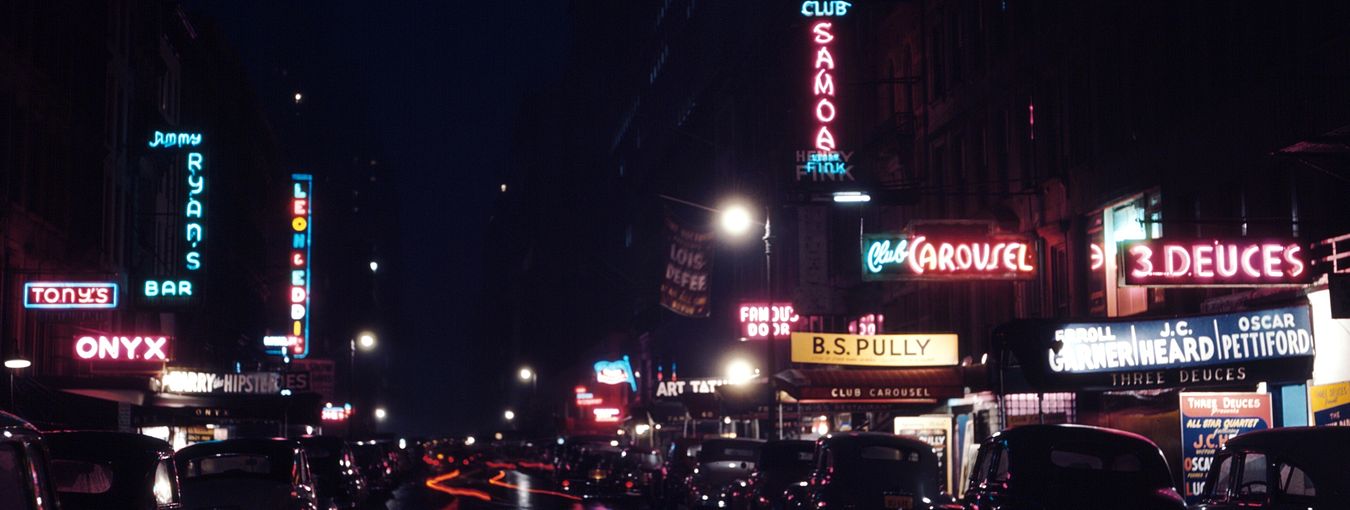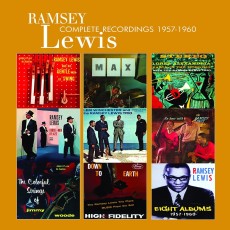
Daily Dose Of Jazz…
Ramsey Emmanuel Lewis, Jr. was born on May 27, 1935 in Chicago, Illinois and began taking piano lessons at the age of four. By 15 he joined his first jazz band, The Cleffs. The seven-piece group provided Lewis his first involvement with jazz and he would later join Cleffs drummer Isaac “Redd” Holt and bassist Eldee Young to form the Ramsey Lewis Trio.
The trio started as primarily a jazz unit and released their first album, Ramsey Lewis And The Gentlemen of Swing, in 1956. Following their 1965 single hit “The In Crowd” that reached #5 on the pop charts and the album #2 they concentrated more on pop material. Young and Holt left in 1966 to form Young-Holt Unlimited and were replaced by Cleveland Eaton and Maurice White.
By 1966, Lewis was one of the nation’s most successful jazz pianists, topping the charts in addition to “The In Crowd” with Hang On Sloopy” and “Wade In The Water”. All three singles each sold over one million copies and were awarded gold discs. Many of his recordings attracted a large non-jazz audience and in the 1970s, he often played electric piano, although by later in the decade he was sticking to acoustic and using an additional keyboardist in his groups.
In addition to recording and performing, Lewis hosted a syndicated morning show on Chicago “smooth jazz” radio station WNUA. His weekly syndicated Legends of Jazz, featured recordings from artists such as David Sanborn, George Duke, Herbie Hancock, Charlie Parker, Dizzy Gillespie, Kurt Elling, Al Jarreau and Miles Davis.
Ramsey has appeared on the Red Hot Organization’s compilation album, Stolen Moments: Red Hot + Cool, his Ramsey Lewis Morning Show became part of Broadcast Architecture’s Smooth Jazz Network, his Legends of Jazz became a television series, he is the artistic director of Jazz at Ravinia, serves on the Board of Trustees for the Merit School of Music and The Chicago High School for the Arts. His Ramsey Lewis Foundation helps connect at-risk children to the world of music. He continues to perform, record and tour.
More Posts: piano
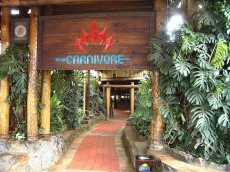
The Jazz Voyager
The Carnivore: P.O. Box 24598, Langata Road, Nairobi, Kenya / Telephone & Fax: 254-2-561959 or 561882 / Contact: Jan Verweil. The restaurant presents international guests backed by the Jazz Academy Ensemble. The jazz happens every Thursday with a eating capacity of 1200. The menu features “nyama choma”, traditional and game meats.
Sponsored By
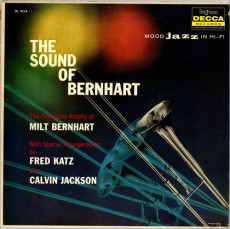
Daily Dose Of Jazz…
Milt Bernhart was born on May 25, 1926 in Valparaiso, Indiana and began his musical career with the tuba. By high school he switched to trombone and by 16 he was working in Boyd Raeburn’s band and later gigged with Teddy Powell.
After a tour in the Army he worked, off and on, with Stan Kenton for the next ten years. He is perhaps most associated with Kenton, but in 1955 he had his first album as a leader. In 1986 he was elected President of the Big Band Academy of America.
Widely known as a mild-mannered and humorous musician his brief period with Benny Goodman was one area that brought out his ire. Except for the Army’s basic training, Milt indicates working with Goodman was “the bottom” of his first 23 years of life, referring to him as a bore and could not abide Goodman’s public humiliation of tenor saxophonist Wardell Gray or his segregated treatment at a Las Vegas club.
West coast jazz trombonist Milt Bernhart, who supplied the exciting solo heard in the middle of Sinatra’s popular 1956 recording of “I’ve Got You Under My Skin” conducted by Nelson Riddle, passed away on January 22, 2004 in Glendale, California.26-2004
More Posts: trombone
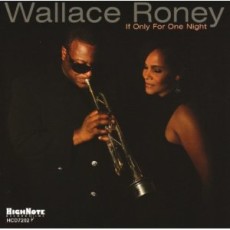
Daily Dose Of Jazz…
Wallace Roney was born May 25, 1960 in Philadelphia, Pennsylvania and at the age of 4 it was discovered he had perfect pitch. He began his musical and trumpet studies at the Settlement School of Music, then from the age of 7 studied with Sigmund Herring of the Philadelphia Orchestra and under the watchful eye of Eugene Ormandy was regularly presented at the Settlement recitals with the Philadelphia Brass Ensemble.
Having already made his recording debut at 14 by the time he entered the Duke Ellington School of the Arts in Washington, D.C., Wallace made his mark in D.C. as a gifted local performer by his graduation. He studied with Langston Fitzgerald of the Baltimore Symphony, attended Howard University and Berklee College of Music, took lessons from Clark Terry and Dizzy Gillespie.
Wallace studied with Miles Davis from 1985 until his death in ’91 and credits Miles as having helped to challenge and shape his creative approach to life as well as being his music instructor, mentor and friend and holds the distinction of being the only trumpet player Davis ever personally mentored.
With all of his skills and early accomplishments, Roney early career was bleak, bordering on homelessness, until he got a call to tour with drummers Tony Williams and Art Blakey. This shot in the arm culminated in him becoming one of the most in-demand trumpeters on record, movie and commercial recording sessions. In 1979 and again in 1980, Wallace Roney won the Down Beat Award for Best Young Jazz Musician of the Year. In 1989, and again in 1990, Wallace won Down Beat Magazine’s Critic’s Poll for Best Trumpeter to Watch.
He has played with Herbie Hancock, Ron Carter, Wayne Shorter, Elvin Jones, Jay McShann, Walter Davis Jr., Sonny Rollins and Curtis Fuller to name the short list and has recorded on over 250 sessions by the time he turned 40. The hard bop and post bop trumpeter Wallace Roney continued to perform, record and tour until he passed away at age 59 from complications arising from COVID~19 on March 31, 2020 in Paterson, New Jersey.
More Posts: trumpet
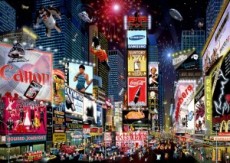
From Broadway To 52nd Street
As our final installment on the musicals and the songs that have gone on to become classics in the jazz catalogue, Broadway has entertained millions of audiences from around the world and has touched every human emotion and story one can imagine. It has captured our hearts and taken us on journeys to unexpected destinations both visceral and intuitive.
The Broadway musical played an integral role in the creation of the Great American Songbook as songs from the legendary composers and lyricists like Gershwin, Porter, KernRodgers, Hammerstein, Van Heusen, Hart, Webber, Rice, Loesser, Bricusse, Newley, Styne, Comden etc. have filled the pages of our imaginations
The “blockbuster” musicals were so successful that they ran over a thousand performances. A small aggregation of only 17 comprised of Oklahoma (2,212), Annie Get Your Gun (1,147), Kiss Me Kate (1,077), South Pacific (1,925), Guys & Dolls (1,200), The King And I (1,246), The Pajama Game (1,063), My Fair Lady (2,717), How To Succeed In Business (1,417), Funny Girl (1,348), Hello Dolly (2,844), Fiddler On The Roof (3,242), The Sound Of Music (1,443), Mame (1,508), Promises, Promises (1,281), Ain’t Misbehavin’ (1,604) and Evita (1,567).
To describe Broadway one would beg permission to borrow from Tevya in Fiddler On The Roof – “without tradition our lives would be as shaky as a fiddler on the roof!”
The lyrics and composition that were relegated to the amphitheaters of “The Great White Way” have received perpetual encores over the past century under the auspices of “The Street” and the songs continue to be honored by living legends, contemporaries and the “new breed” of jazz musicians and vocalists.
52nd Street, between Fifth and Seventh Avenues was known as “Swing Street” was equally attended by hundreds of thousands during its heyday between the 1930s and 1950s in just thirteen clubs. Equally blockbuster are the million selling albums of Miles Davis (Kind of Blue), Dave Brubeck (Time Out), John Coltrane (A Love Supreme, Blue Train), Herbie Hancock (Headhunters), Louis Armstrong (What A Wonderful World), Ella Fitzgerald (Best of the Songbooks).
To describe 52nd Street one would merely state that it was the epicenter of jazz in New York City and the connection between the musicians who played on Broadway and the legitimate clubs. It was the place where musicians who played for others earlier in the night, played for themselves on 52nd Street.




